Scaffolding Companies Greenbelt
Top 10 Scaffolding Experts in Greenbelt
Get up to 3 Scaffolding Specialists quotes for your project today! Compare profiles, reviews, accreditations, portfolio, etc... and choose the best service.
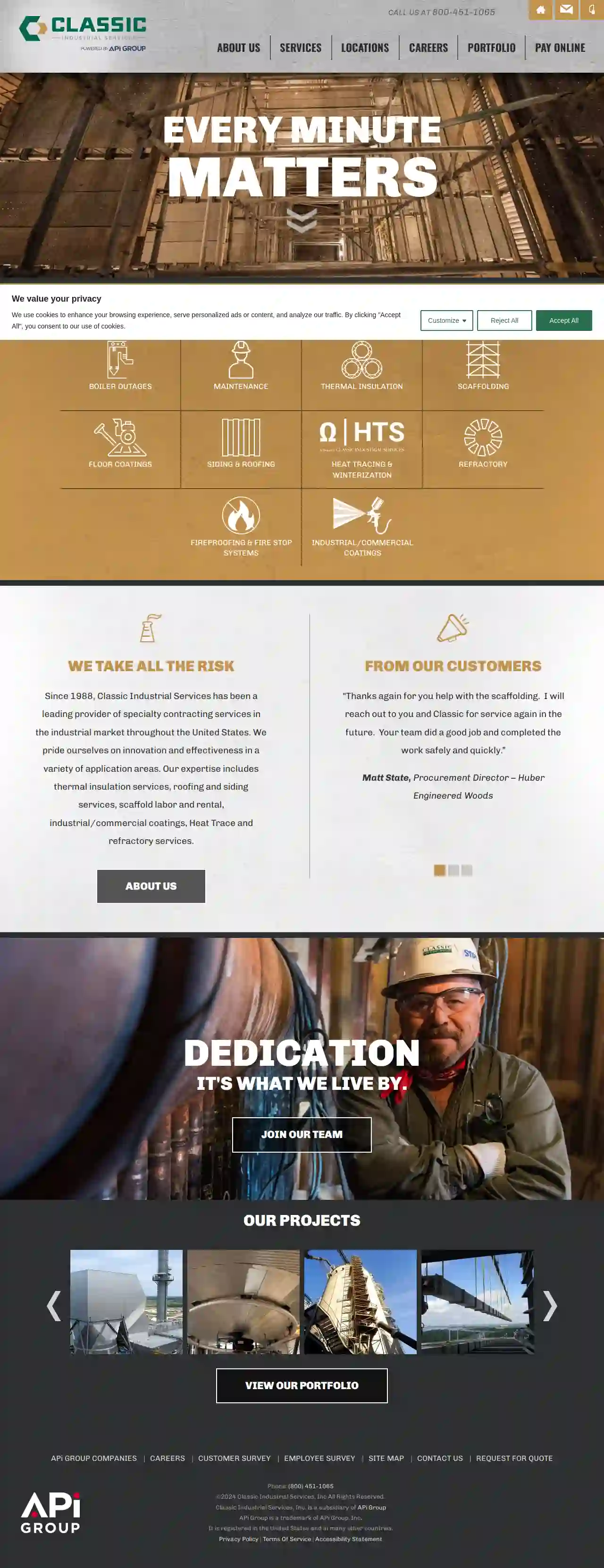
Classic Industrial Services Inc
53 reviews456 Highlandia Drive, Baton Rouge, 70810, USClassic Industrial Services is a leading provider of specialty contracting services in the industrial market throughout the United States. Since 1988, we have been dedicated to innovation and effectiveness in various application areas including thermal insulation services, roofing and siding services, scaffold labor and rental, industrial/commercial coatings, Heat Trace and refractory services. Our core purpose is to provide construction services that make our customers' projects simpler and more successful. We prioritize safety, respect, and fairness in our work, and we are committed to delivering quality work and customer service for every project.
- Services
- Why Us?
- Accreditations
- Our Team
- Testimonials
- Gallery
Get Quote
Layher Scaffolding
51 reviews8225 Hansen Road, Houston, 77075, USLayher North America is a leading provider of scaffolding systems and solutions. With a strong presence in the United States and Canada, we offer a wide range of products and services designed to meet the needs of various industries, including construction, oil and gas, power plants, and more. Our scaffolding systems are designed to be safe, efficient, and cost-effective. We offer a variety of scaffolding solutions, including Allround Scaffolding, Layher Lightweight, SpeedyScaf Scaffolding, STAR Frame Scaffolding, and Rolling Towers. Our protective systems include Allround FW Roof, Keder XL Roof System, Cassette Roof, Protect System, and Edge Protection Railing Clamp. At Layher North America, we are committed to providing our customers with the highest level of service and support. Our team of experts is dedicated to helping you find the right scaffolding solution for your project. We offer pre-planning and optimization, on-site support and training, digital design and engineering, and scaffold information modeling. We are proud to be a part of the Layher Group, a global leader in scaffolding systems. With a strong presence in over 40 countries, we are well-equipped to meet the needs of our customers around the world.
- Services
- Why Us?
- Accreditations
- Gallery
Get Quote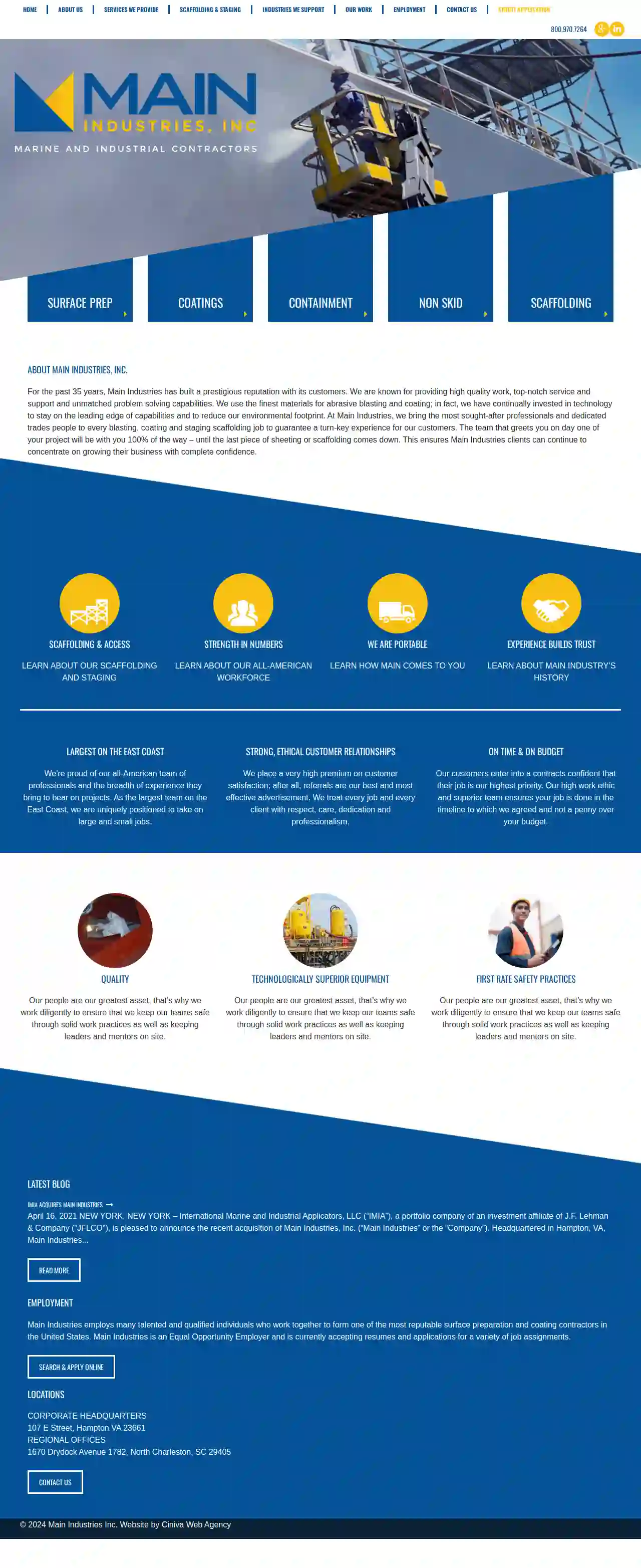
Main Industries, Inc
Hampton, VA, 107 E Street, 23661, USMain Industries, Inc. is a prestigious surface preparation and coating contractor with over 35 years of experience. The company is known for providing high-quality work, top-notch service and support, and unmatched problem-solving capabilities. Main Industries uses the finest materials for abrasive blasting and coating, and has continually invested in technology to stay on the leading edge of capabilities and reduce its environmental footprint. The company brings together the most sought-after professionals and dedicated tradespeople to guarantee a turn-key experience for its customers. The team that greets clients on day one of a project will be with them 100% of the way, ensuring that clients can concentrate on growing their business with complete confidence.
- Services
- Why Us?
- Accreditations
- Gallery
Get Quote
AXIOS Industrial Group - Sulphur
The Woodlands, TX, 10077 Grogans Mill Rd, Suite 450, 77380, USAt Axios Industrial, we're a dynamic industrial service company that values safety, productivity, predictability, and unparalleled expertise. We provide innovative solutions for leaders in the oil and gas, power generation, pulp and paper, agriculture, and pharmaceutical markets. Our team of seasoned professionals is committed to delivering on-time, on-budget solutions that meet our clients' complex needs. With a proven track record of trust, excellence, and safety, we're the trusted partner for your industrial services needs. Our services include scaffolding, insulation, coatings, surface preparation, and specialty services. We use our advanced technology platforms to reduce costs, increase safety, and improve productivity. Our team is dedicated to providing exceptional service and support to our clients. We're headquartered in The Woodlands, Texas, with locations across the US. We're proud to be a leading provider of industrial services and look forward to working with you.
- Services
- Why Us?
- Gallery
Get Quote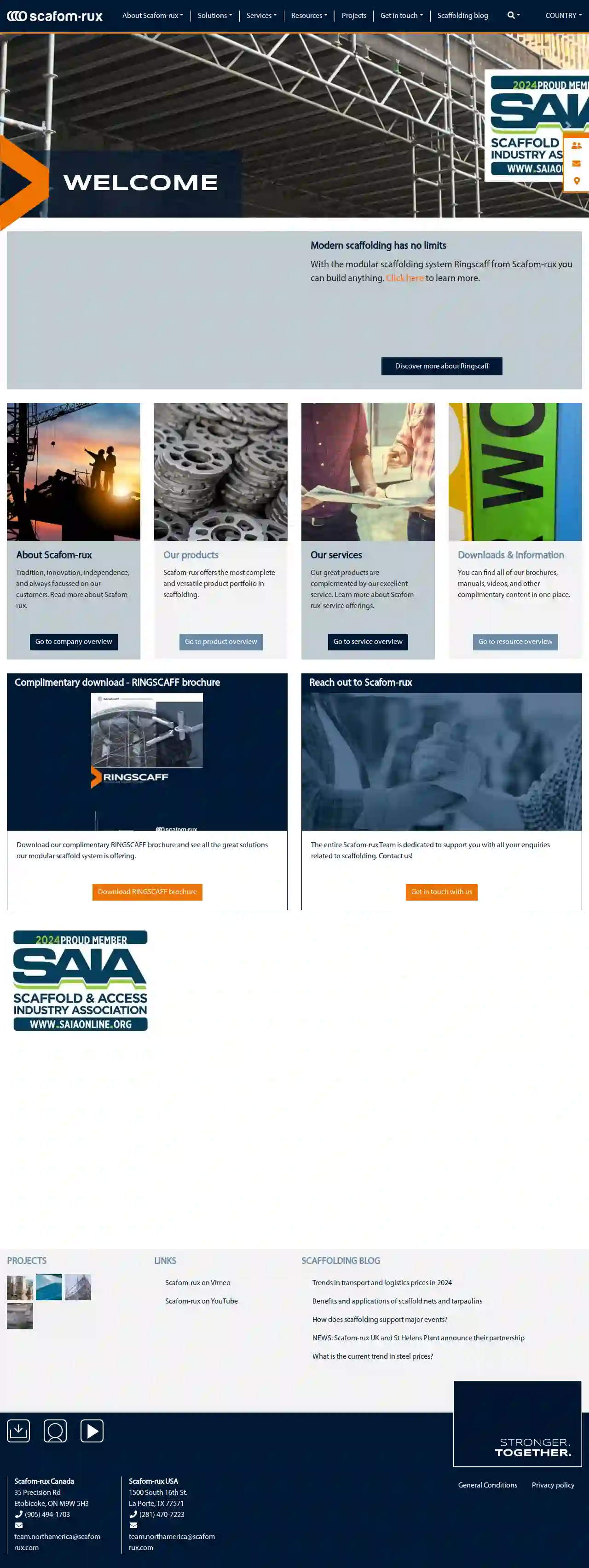
Scafom USA
52 reviews35 Precision Rd, Etobicoke, M9W 5H3, USAbout Scafom-rux Scafom-rux is a leading global provider of innovative and reliable scaffolding solutions. With a rich history of tradition, innovation, and customer focus, we offer a comprehensive range of products and services to meet the diverse needs of our clients in various industries. Our commitment to excellence is reflected in our high-quality products, exceptional service, and unwavering dedication to safety. We strive to be a trusted partner for our customers, providing them with the best possible solutions for their scaffolding requirements.
- Services
- Why Us?
- Gallery
Get Quote
Apache Industrial
51 reviewsCorporate Office, North Lake Houston Shop and Training Facility, 250 Assay Street, Houston, Texas, 77044, USApache Industrial is a leading provider of soft craft services, including scaffolding, fireproofing, coatings, insulation, digital solutions, and abatement. With over 40 locations across North America, the company offers a comprehensive and one-stop solution for project needs, emphasizing efficiency, quality, safety, and environmental compliance. Apache Industrial has a strong commitment to digitization and technology, providing innovative digital solutions to enhance project management, scanning, design, and 3D modeling. The company prioritizes customer-specific solutions, cost savings, and safety, with a focus on quality inspection teams and experienced craft professionals.
- Services
- Why Us?
- Accreditations
- Our Team
- Testimonials
- Gallery
Get Quote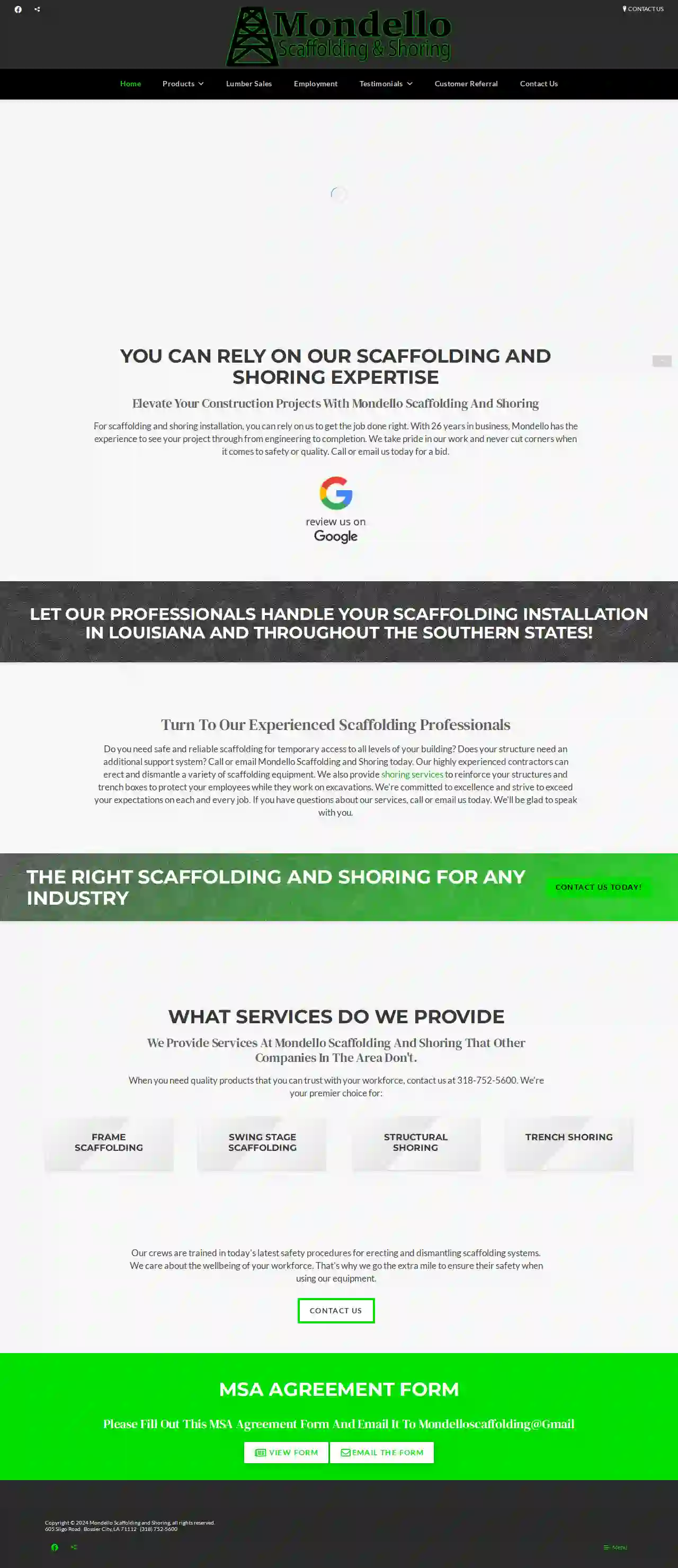
Mondello Scaffolding & Shoring
4.76 reviewsBossier City, LA, 605 Sligo Road, 71112, USMondello Scaffolding and Shoring is a premier provider of scaffolding and shoring services, offering a wide range of solutions for construction projects. With over 26 years of experience, the company prides itself on its commitment to safety, quality, and customer satisfaction. From frame scaffolding to trench shoring, Mondello Scaffolding and Shoring has the expertise and equipment to meet all your construction needs.
- Services
- Why Us?
- Testimonials
- Gallery
Get Quote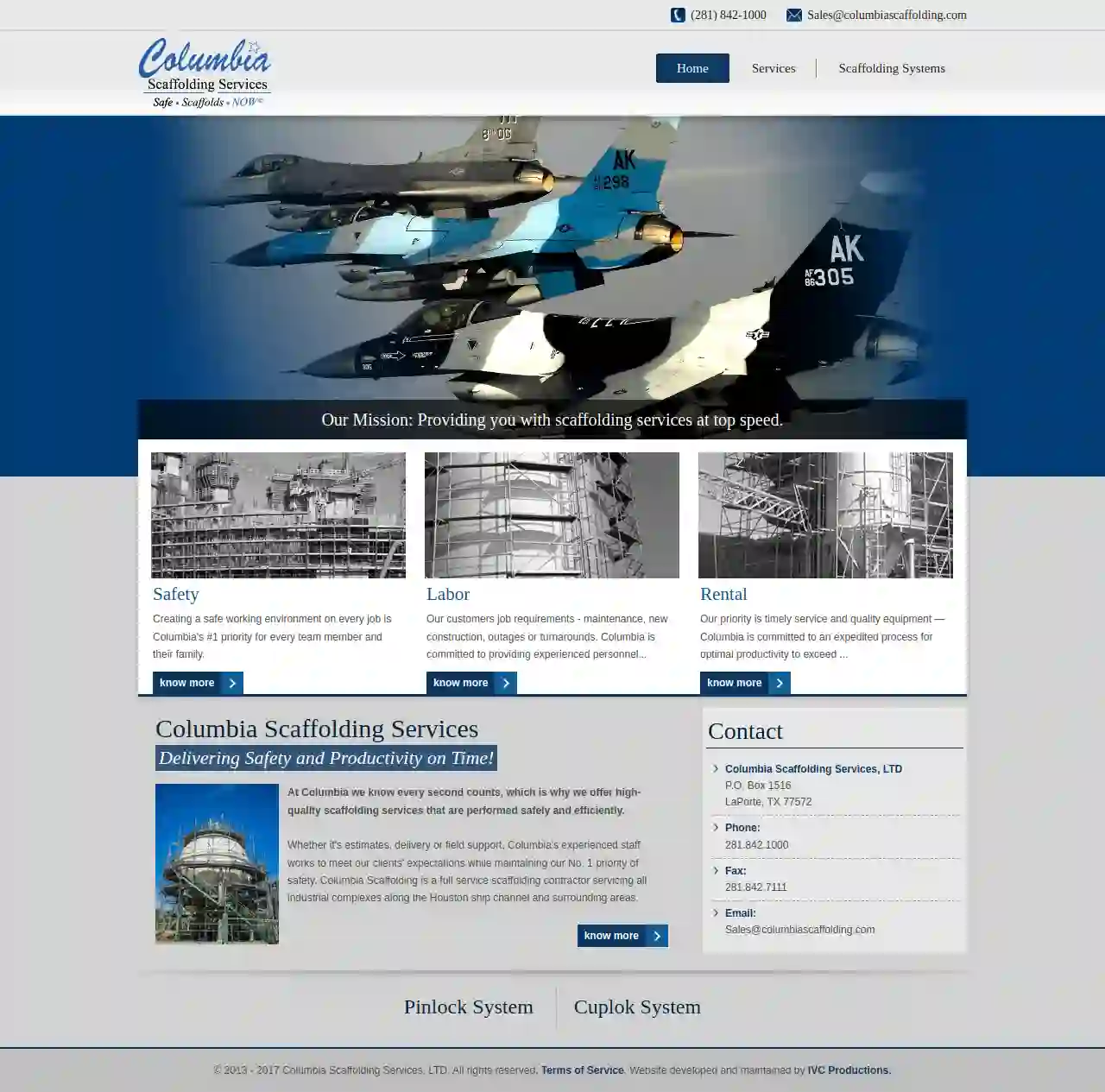
Columbia Scaffolding Services
3.47 reviewsLaPorte, TX, P.O. Box 1516, 77572, USColumbia Scaffolding Services, LTD is a full service scaffolding contractor that delivers safety and productivity on time. With a focus on safety, labor, and rental services, Columbia aims to meet clients' expectations efficiently. Based in LaPorte, TX, they serve all industrial complexes along the Houston ship channel and surrounding areas.
- Services
- Why Us?
- Accreditations
- Our Team
- Testimonials
- Gallery
Get Quote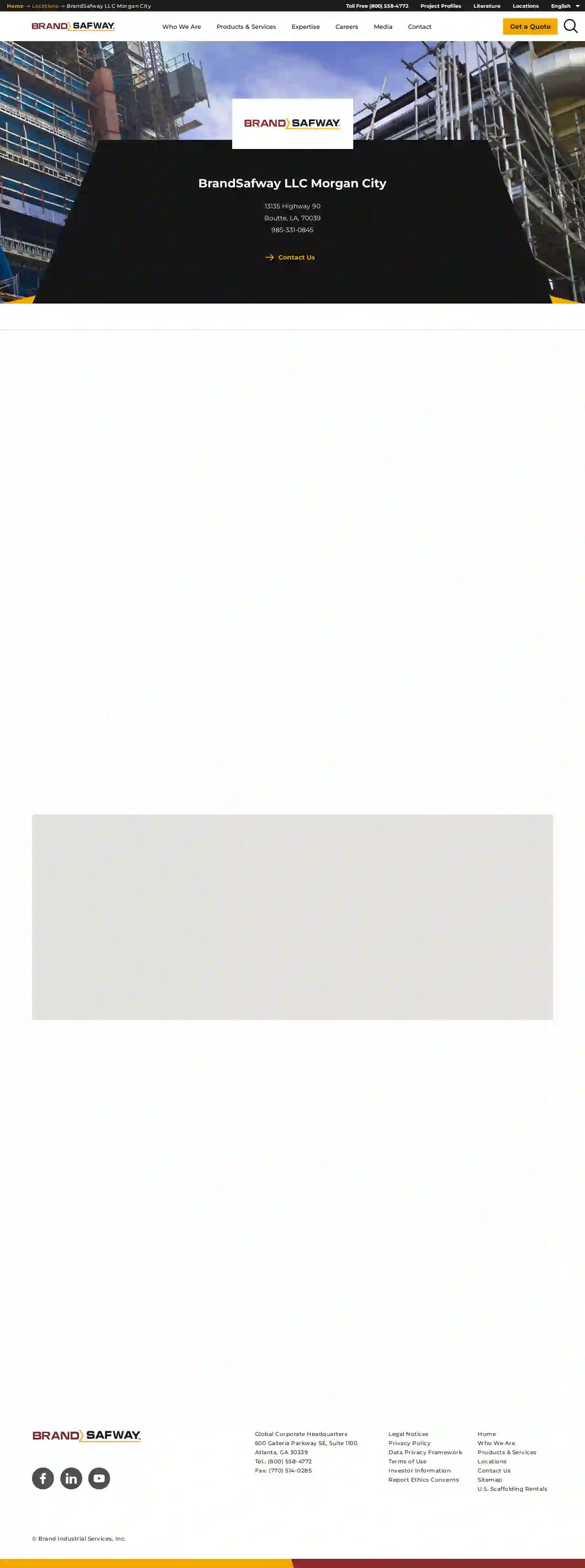
BrandSafway LLC Morgan City
55 reviews123 BrandSafway Blvd, Morgancity, 12345, USBrandSafway is a leading provider of access solutions, including scaffolding, aerial work platforms, and forming and shoring equipment. With a strong commitment to safety, quality, and customer satisfaction, BrandSafway offers a wide range of services tailored to meet the unique needs of clients across various industries. Their team of experienced professionals works closely with clients to understand their requirements and deliver customized solutions that enhance efficiency and productivity. BrandSafway is dedicated to providing innovative solutions that ensure safe and efficient access to any work area, making them a trusted partner for businesses seeking reliable access solutions.
- Services
- Why Us?
- Accreditations
- Our Team
- Testimonials
Get Quote
BrandSafway Services Baltimore-Washington, D.C.
4.225 reviews123 BrandSafway Blvd, Baltimore, 21000, USBrandSafway is a leading provider of access solutions, including scaffolding, aerial work platforms, and forming and shoring equipment. With a strong presence in the Baltimore-Washington, DC area, the company offers a wide range of services tailored to meet the specific needs of clients. BrandSafway's mission is to provide safe, efficient, and innovative solutions that enhance productivity and profitability for its customers. The team consists of experienced professionals dedicated to delivering exceptional service and ensuring customer satisfaction.
- Services
- Why Us?
- Accreditations
- Our Team
- Testimonials
Get Quote
Over 2,353+ Scaffolding Contractors in our network
Our scaffolding contractors operate in Greenbelt & surrounding areas!
ScaffoldingHQ has curated and vetted the Best Scaffolding Companies arround Greenbelt. Find a top & reliable pro today.
Frequently Asked Questions About Scaffolding Companies
- Stability and Level: The scaffolding is level and firmly supported by a solid foundation.
- Secure Connections: All components (tubes, clamps, fittings) are properly connected and tightened.
- Guardrails and Toeboards: Adequate guardrails and toeboards are in place to prevent falls.
- Platforms and Decking: Platforms are secure, free from damage, and provide adequate working space.
- Access and Egress: Safe access and exit points are available (ladders, stairs).
- Weather Protection: Appropriate measures are in place to protect workers from adverse weather conditions (e.g., wind screens, covers).
- Clearance from Hazards: The scaffolding is a safe distance from power lines, trees, or other potential hazards.
- Scaffolding Tag: The scaffolding tag is up-to-date and displays the last inspection date, maximum load capacity, and any restrictions.
- Communicate with the Scaffolding Company: Clearly express your concerns about potential damage to landscaping, structures, or utilities.
- Clear the Area: Remove any valuable or fragile items from the work zone.
- Protect Landscaping: Cover plants, shrubs, and lawns with tarps or protective sheeting.
- Mark Underground Utilities: Ensure underground utilities (water lines, electrical cables) are marked and avoided during installation.
- Supervision: If possible, be present during erection and dismantling to monitor the process.
- Experience: 'How long have you been in business, and what experience do you have with projects like mine?'
- Licensing and Insurance: 'Are you fully licensed and insured, and can I see proof of coverage?'
- Safety Record: 'What are your safety procedures, and how do you ensure worker safety on the job site?'
- References: 'Can you provide references from previous clients?'
- Quotes and Costs: 'Can you provide a detailed quote that outlines all costs, including materials, labor, and any additional services?'
- Project Timeline: 'What is the estimated timeframe for scaffolding erection and dismantling?'
- Communication: 'How will you communicate with me throughout the project?'
What should I look for during a scaffolding inspection?
Can I erect scaffolding myself?
How do I protect my property from damage during scaffolding erection and dismantling?
What questions should I ask a scaffolding company before hiring them?
What should I look for during a scaffolding inspection?
- Stability and Level: The scaffolding is level and firmly supported by a solid foundation.
- Secure Connections: All components (tubes, clamps, fittings) are properly connected and tightened.
- Guardrails and Toeboards: Adequate guardrails and toeboards are in place to prevent falls.
- Platforms and Decking: Platforms are secure, free from damage, and provide adequate working space.
- Access and Egress: Safe access and exit points are available (ladders, stairs).
- Weather Protection: Appropriate measures are in place to protect workers from adverse weather conditions (e.g., wind screens, covers).
- Clearance from Hazards: The scaffolding is a safe distance from power lines, trees, or other potential hazards.
- Scaffolding Tag: The scaffolding tag is up-to-date and displays the last inspection date, maximum load capacity, and any restrictions.
Can I erect scaffolding myself?
How do I protect my property from damage during scaffolding erection and dismantling?
- Communicate with the Scaffolding Company: Clearly express your concerns about potential damage to landscaping, structures, or utilities.
- Clear the Area: Remove any valuable or fragile items from the work zone.
- Protect Landscaping: Cover plants, shrubs, and lawns with tarps or protective sheeting.
- Mark Underground Utilities: Ensure underground utilities (water lines, electrical cables) are marked and avoided during installation.
- Supervision: If possible, be present during erection and dismantling to monitor the process.
What questions should I ask a scaffolding company before hiring them?
- Experience: 'How long have you been in business, and what experience do you have with projects like mine?'
- Licensing and Insurance: 'Are you fully licensed and insured, and can I see proof of coverage?'
- Safety Record: 'What are your safety procedures, and how do you ensure worker safety on the job site?'
- References: 'Can you provide references from previous clients?'
- Quotes and Costs: 'Can you provide a detailed quote that outlines all costs, including materials, labor, and any additional services?'
- Project Timeline: 'What is the estimated timeframe for scaffolding erection and dismantling?'
- Communication: 'How will you communicate with me throughout the project?'